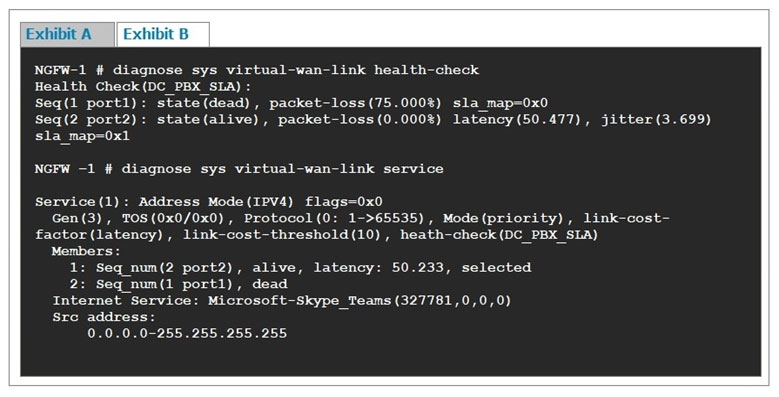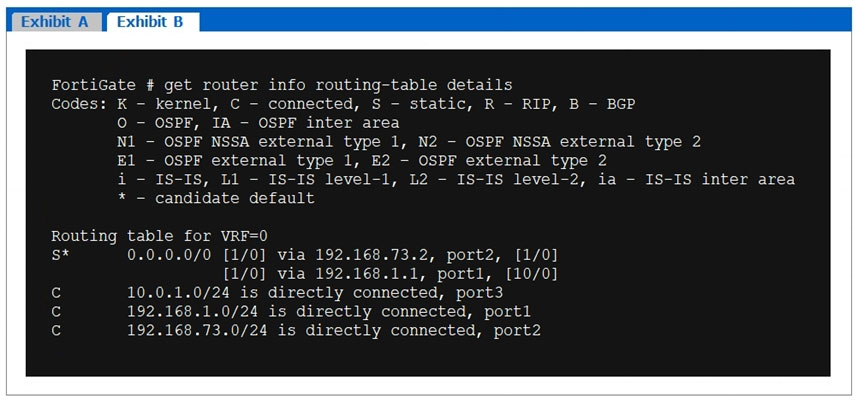Which diagnostic command can you use to show the SD-WAN rules interface information and state?
The correct command to show the SD-WAN rules interface information and state is 'diagnose sys virtual-wan-link service.' This command provides detailed information about the SD-WAN service, including the status and interface information.
Refer to exhibits.


Exhibit A shows the performance SLA exhibit B shows the SD-WAN diagnostics output.
Based on the exhibits, which statement is correct?
Exhibit B shows that Port1 is in a dead state after having a packet loss of 75% and meeting the failure threshold of 5 as configured in the SLA. The SLA for DC_PBX_SLA specifies a failure threshold of 5, meaning the link is considered dead if it fails to meet the SLA criteria for 5 consecutive checks. Therefore, the SLA state of port1 is dead after five unanswered requests by the SLA servers.
Which statement is correct about the SD-WAN and ADVPN?
ADVPN (Automated Dynamic VPN) interface can be utilized as a member of the SD-WAN interface. This is possible due to its flexible and dynamic nature, which allows it to manage network traffic efficiently within an SD-WAN architecture. This integration enhances the performance and redundancy capabilities of the SD-WAN setup.
Which two reasons make forward error correction (FEC) ideal to enable in a phase one VPN interface? (Choose two.)
Forward error correction (FEC) is ideal to enable in a phase one VPN interface for two main reasons. Firstly, FEC transmits additional packets as redundant data to the remote device. This helps in error detection and correction without the need for retransmission, improving the efficiency and performance of the VPN connection. Secondly, FEC improves reliability by mitigating adverse WAN conditions such as noisy links. This ensures a more stable and robust connection, which is critical for the stability and reliability of the VPN.
Refer to exhibits.


Exhibit A shows the source NAT global setting and exhibit B shows the routing table on FortiGate.
Based on the exhibits, which two statements about increasing the port2 interface priority to 20 are true? (Choose two.)
All the existing sessions using SNAT will be flushed and rerouted through port1. This means that any sessions currently using SNAT will be interrupted and rerouted due to the priority change of the port interfaces. Also, the sessions that do not use SNAT will be similarly flushed and rerouted through port1. This is because the FortiGate device will re-evaluate the routing table and apply the new configuration, leading to the re-routing of all current sessions to the new preferred interface, which will now be port1.